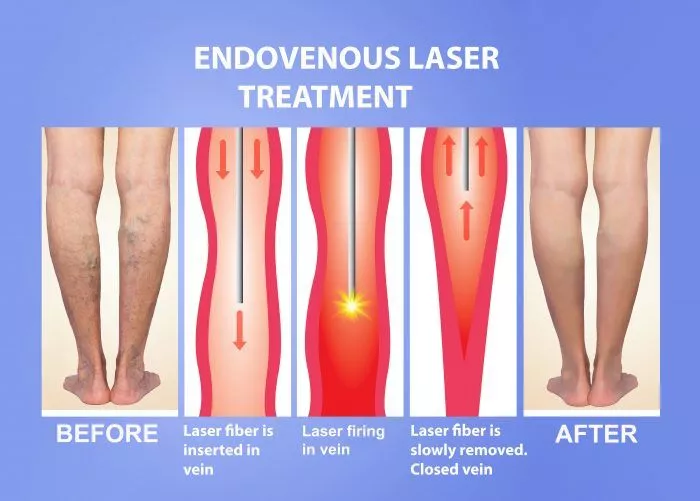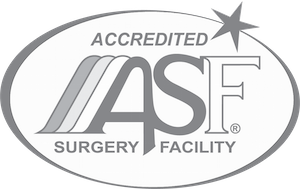Home > What We Do
VEIN & VASCULAR
ENDOVENOUS LASER THERAPY FOR VARICOSE VEINS
What are Varicose Veins?
Varicose veins are the large, “rope-like” veins which are often one-quarter inch or larger in diameter.
What Causes Varicose Veins?
Varicose veins occur when veins are not properly returning blood from the lower leg to the heart. All veins have valves that open to allow the flow of blood to the heart and close to prevent backflow (otherwise known as “reflux”) of blood to the foot. When valves fail to function properly, blood leaks through and flows down the leg in the wrong direction. The blood overfills and distends the superficial veins under the skin, resulting in the bulging seen in varicose veins. The walls and valves of veins are thin and elastic, and can stretch due to a variety of conditions including pregnancy, heredity and age. When varicose veins become severe, it is referred to as chronic venous insufficiency. Symptoms of chronic venous insufficiency include aching pain, easy leg fatigue, and leg heaviness, all of which worsen as the day progresses. Left untreated, chronic venous insufficiency can cause ulcerations, which can be very difficult to treat.
How does endovenous laser therapy work?
Previously, treatment of painful, swollen varicose veins required a surgical procedure called vein stripping, where the vein was completely removed from the leg. More recently, endovenous laser therapy has been developed to treat chronic venous insufficiency by delivering laser energy through a small puncture in the leg to close the diseased vein. With endovenous laser therapy, no surgery is required, and the entire procedure can be performed in less than one hour in your physician’s office. During the procedure, you are awake and your leg is anesthetized. A thin laser fiber is inserted into the great saphenous vein in your thigh. Your physician then delivers laser energy through the fiber and into the vein, causing the vein to close.
Is endovenous laser therapy painful?
Although individual responses vary, most people report little to no pain associated with endovenous laser therapy. Often, the only sensation is felt during the delivery of anesthetic to the leg. After the procedure, you may feel some tenderness, tingling, itching, or tightness in the treated leg, which should disappear within a month.

Patient’s Guide to Endovenous Laser Therapy
Patient’s Guide to Vein Disease
Patient’s P.A.D. Screening Questionnaire
Patient’s Guide to P.A.D.
VASCULAR ANGIOGRAPHY SUITE
Our state-of-the art vascular angiography lab is one of the few centers in the State of New Jersey to boast the rigorous AAAASF accreditation. It allows percutaneous therapy for peripheral arterial disease to be delivered in an out of hospital setting. Peripheral arterial disease causes plaque build- up in the arteries (atherosclerosis) which results in a significant reduction of blood flow to the legs and feet. Symptoms of P.A.D. in the legs present as claudication (exertional pain) or critical limb ischemia (rest pain), numbness, tingling, burning, discoloration or ulcers. It is important to treat P.A.D. as it may also involve hardened and narrowed arteries to the heart and brain, causing an increased risk of heart attack or stroke.
Our platform for revascularization uses a minimally invasive (percutaneous) way to treat those symptoms in an out-patient setting. We use modalities that include balloon angioplasty, arterial stenting, and atherectomy for that purpose. Our patient satisfaction is extremely high.
You can expedite your office visit by completing the Varicose Vein Examination Questionnaire (PDF) before your arrival.

